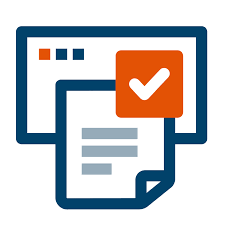ECM Integrations You Need to Have
- Joe Mempin
- Feb 12, 2021
- 4 min read
Updated: Nov 19, 2024

Content management has a significant role to play when integrated with other business-critical, content generating applications. Essentially it serves as middleware. The evolution of ECM into middleware grew over time because there was a need. Enterprises required a system to “glue” them together, to provide infrastructure but be more. What many agencies discovered is ECM could be used as middleware.
ECM (much like middleware) contains the key building blocks (with workflow) for creating business processes, extending COTS applications, building portals and enhancing capture, search and records management, development tools, and of course a cohesive security structure.
If all of your organization’s information was in one place, life would be easy! But, unfortunately, the opposite is true. Information is stored in different places, follows different workflows and retentions, and is in different formats.
An intelligent approach to integrating ECM with your business-critical applications reduces time spent looking for documents while helping you get more productivity. Here are three business systems we often integrate with ECM:
Enterprise Resource Planning
ERP systems are an important tool to integrate because they are the main channel for all the organization’s accounting information. The integration provides multiple ways to simplify accounting. For instance,
For accounts receivable, for example, you no longer need to print paper invoices and save the digital files separately. Instead, you simply snapshot it virtually into Laserfiche. Then, Laserfiche Workflow sends it to the client via email, while automatically saving a copy for your own records.
This helps save time in the process because the staff member has all the relevant information at hand: invoice, proof of delivery, original purchase order, and initial quote. This ease of access reduces errors and speeds up the process, which tends to result in reducing delays for payments and better cash flow. We’ve got a great demo of this process. Check it out here.
For accounts payable, ECM integration offers an efficient way to obtain information in your ERP system. For example, during the payment approval process, you have probably already captured a lot of information, such as the vendor name on the invoice, invoice number, total amount, and so on. The capture of this information is automated upon scanning. If your systems are not integrated, it usually means that someone has to enter this data manually. Instead, ECM integration makes it easy to capture payment data to the ERP system. This improves productivity and accuracy, ensuring that you only pay for the products and services you have requested and received.
In email, each employee’s email folders act like an information bin. They cannot easily share the information contained in these emails, except by forwarding them to everyone (who may or may not be interested in them). Ideally, e-mails relevant to the entire organization or kick off a workflow, or will serve as a public record, should be directed to a central document repository, where they are easily accessible.
ECM integration with your email system allows users to selectively archive incoming and outgoing messages. You can automatically store and index the selected emails, making them available to other colleagues, depending on their rights.
Customer Resource Management
Integrating CRM and ECM platforms improves efficiency by storing and retrieving customer documents such as communications, client requests, emails, and invoices.
Let’s say you’re working in the CRM system and have to create a client communication. The CRM probably has an available template that generates a Word template and uses the customer record to automatically fill in multiple fields (address, customer name, etc.). Once the letter is ready, you can print it or send it electronically to the customer and save a copy.
If you use the “save as” function to save a copy in another place, opportunities for errors start to emerge.
You have to worry about saving the copy with the mandated filename and in the correct folder, and sometimes even copying it two or three times to store it in different places. This is a recipe for disaster.
In addition, by relying on users to manually enter the metadata, you may be compromising data consistency and naming conventions. A person can type “ABC Company” in the CRM, but then shorten it to “ABC” when saving the file. This kind of inconsistency results in problems when it comes to search and retrieval.
With Laserfiche integration, all archiving and indexing is carried out automatically in the background. The solution saves a digital copy while printing the hard copy of the letter and automatically indexes the document for easy retrieval, capturing the company name, invoice number, etc. With ECM, you create a reliable digital file with consistent metadata, with no additional work (and fewer opportunities for mistakes) for employees.
In the end, Laserfiche is much more than just a central repository for all your documents and information. It is also a tool for capturing, processing, retrieving, and sharing this information efficiently. Integrating ECM with your existing business systems (especially your ERP, CRM, and E-mail) provides important benefits across your organization.



Comments